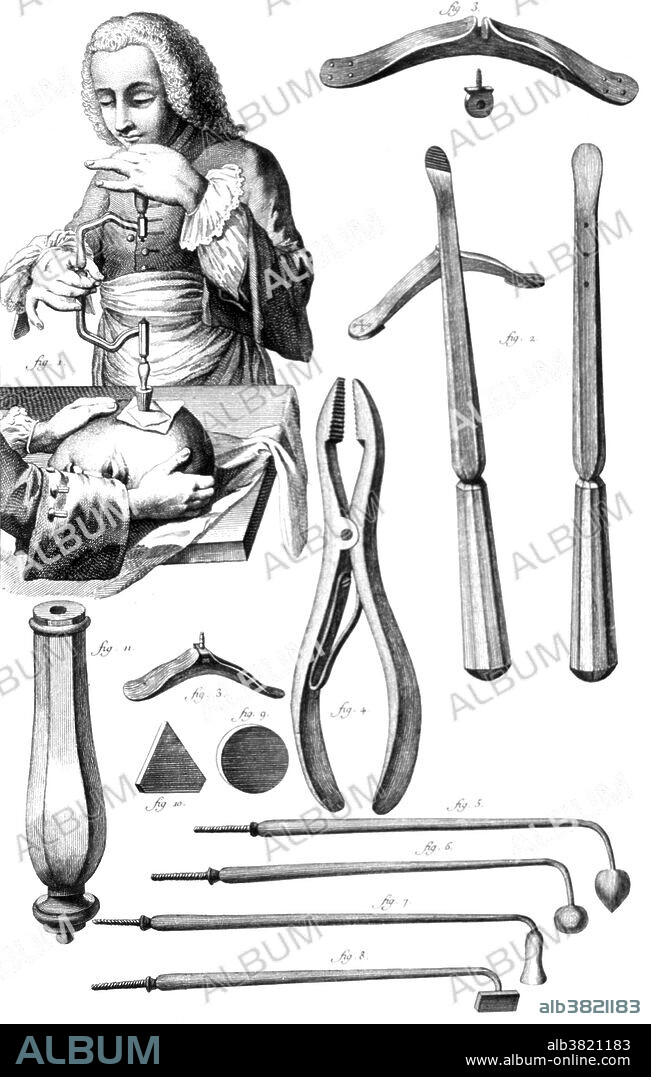alb3821183
Trepanning, 1772

|
Ajouter à une autre Lightbox |
|
Ajouter à une autre Lightbox |



Avez-vous déjà un compte? S'identifier
Vous n'avez pas de compte ? S'inscrire
Acheter cette image.
Sélectionnez l'usage:

Titre:
Trepanning, 1772
Légende:
Voir la traduction automatique
Trephining. In addition to forceps, instruments for actual cautery including a round and a triangular plate, a sleeve for different cauteries, and instruments designed by Petit and Louis, the surgical instrument arbre du trepan is demonstrated, 1772. Trepanning is a surgical intervention in which a hole is drilled or scraped into the human skull, exposing the dura mater to treat health problems related to intracranial diseases. Cave paintings indicate that people believed the practice would cure epileptic seizures, migraines, mental disorders and the bone that was trepanned was kept as a charm to keep evil spirits away. Trepanation was also practiced in the classical and Renaissance periods. Hippocrates gave specific directions on the procedure from its evolution through the Greek age, and Galen also elaborates on the procedure. During the Middle Ages and the Renaissance, trepanation was practiced as a cure for various ailments, including seizures and skull fractures.
Crédit:
Album / NLM/Science Source
Autorisations:
Taille de l'image:
2547 x 4008 px | 29.2 MB
Taille d'impression:
21.6 x 33.9 cm | 8.5 x 13.4 in (300 dpi)
Mots clés:
18 18E 18EME XVIII XVIIIE XVIIIEME SIECLE • 18E SIECLE • 18EME S • ANATOMIE: CRANE • ANATOMIE: CRANES • BARQUE • CHIRURGIE • CORPS CRANE • CRANE • CRÂNES • DIX-HUITIÈME SIÈCLE • FOND • GITE RURAL • ILLUSTRATION • INTERVENTION • MEDECINE CHIRURGIE • MEDICAL • MONOCHROME • MORT CRANE • OPERATION MEDICALE • OPERATION • TETE DE MORT • TREPANATION • XVIIIE SIECLE


 Pinterest
Pinterest Twitter
Twitter Facebook
Facebook Copier le lien
Copier le lien Email
Email
